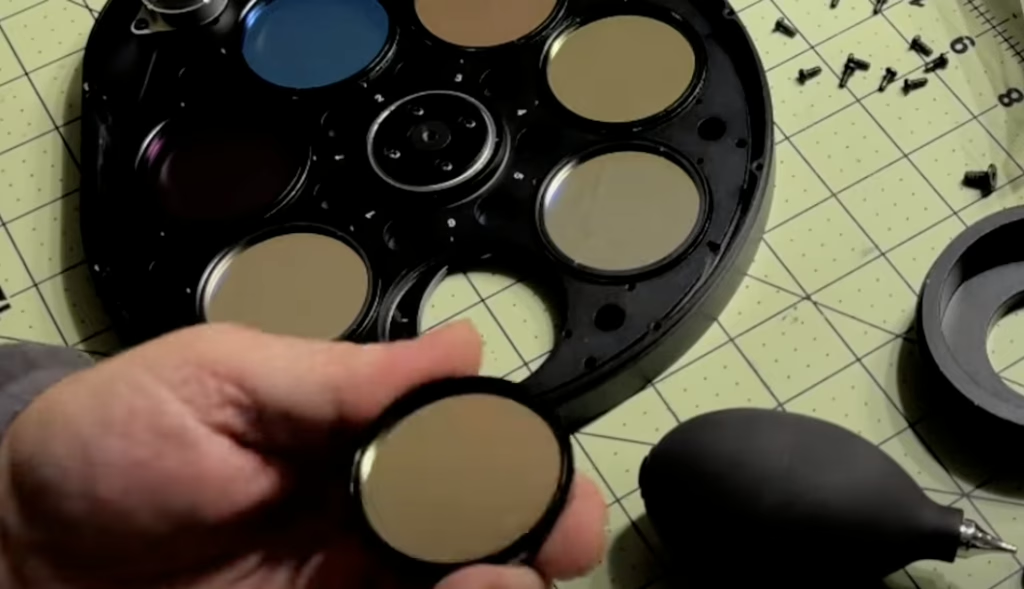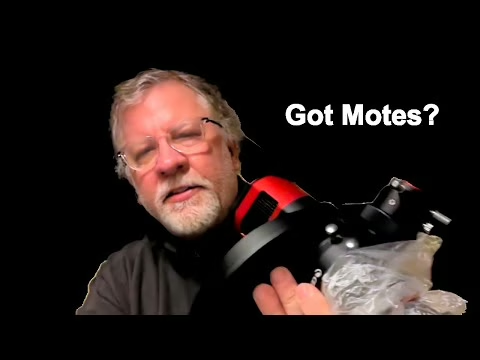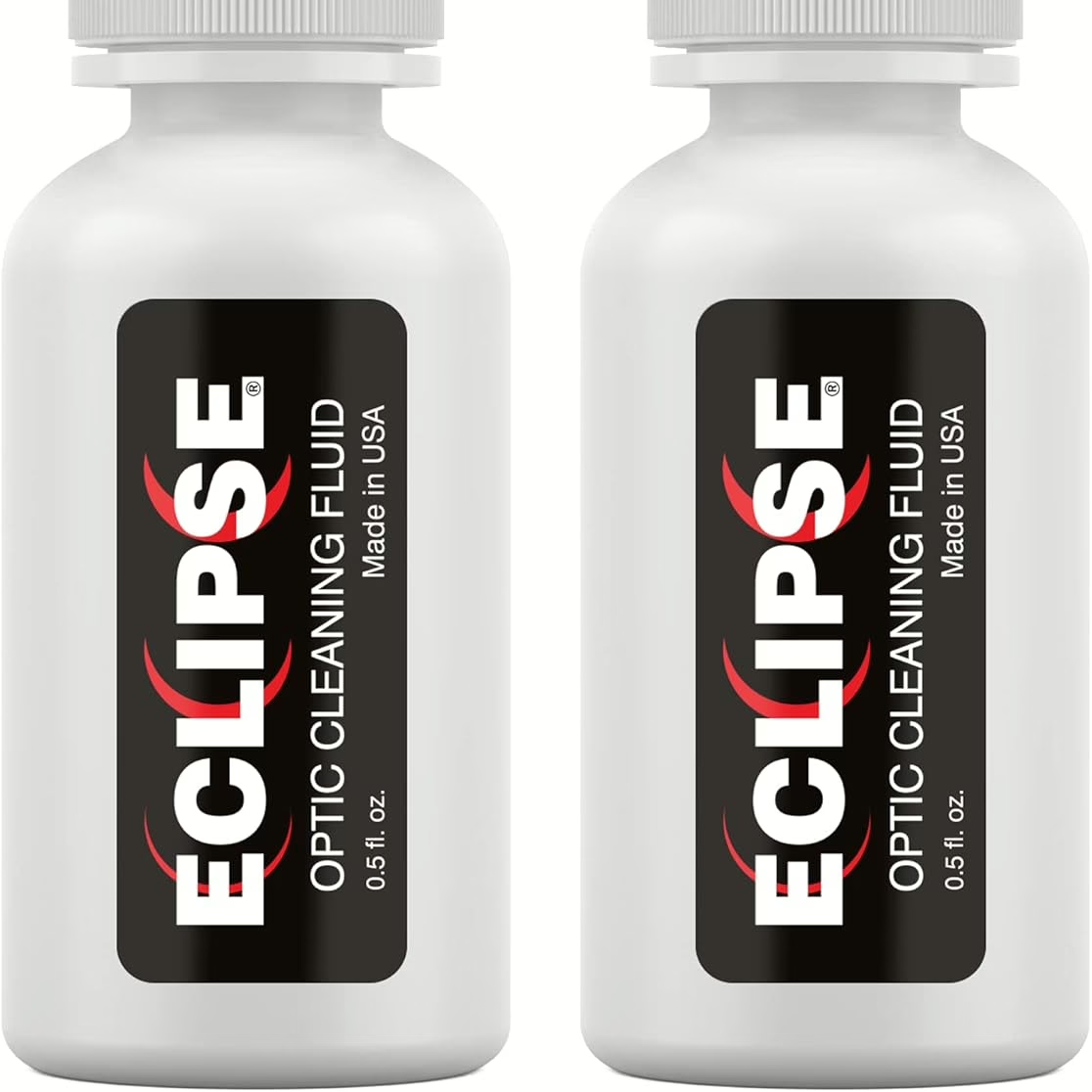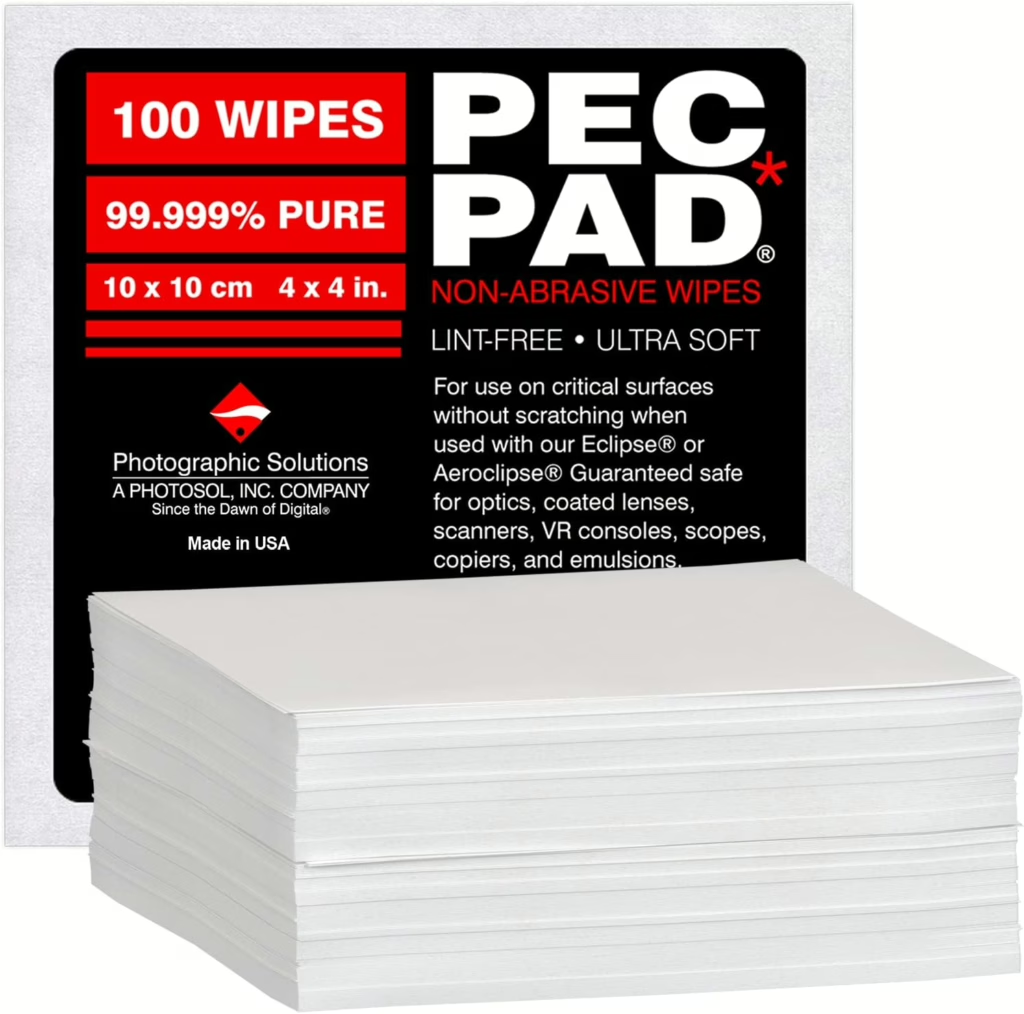A Step-by-Step Guide
Achieving crystal-clear optics is essential for capturing stunning astrophotography images. In this tutorial, we’ll walk through a straightforward process to clean your telescope’s image train optics effectively and safely—all in under 30 minutes.
What You’ll Need
- Lens cleaning solution: Preferably one designed for optical surfaces.
- Eclipse Optic Cleaning Solution: ➤ https://amzn.to/3YZzs5v
- Lint-free cloths: Lint-free and clean.
- PEC-PAD Lint Free Wipes: ➤ https://amzn.to/4eDMxr0
- Cleaning Kit with Bulb air blower: For removing loose particles and a Soft brush to gently dislodge dust.
- Altura Photo Cleaning Kits and Supplies: ➤ https://amzn.to/40W6Axt
- Sensor swabs: For detailed cleaning of sensor glass.
- Senor Cleaning Kit: ➤ https://amzn.to/3Z0fhnR
- Surgical gloves: For ensuring no oils from your skin can come in contact with the optics
- Nitrile Exam Gloves: ➤ https://amzn.to/4js7l7t
Step-by-Step Cleaning Process

- Initial Inspection
- Wear surgical gloves
- Before cleaning, inspect your optics under good lighting to identify areas with dust, smudges, or other contaminants.
- Wear surgical gloves
- Dust Removal
- Use a bulb blower to blow off loose dust particles. Hold the bulb upright and the optic upside down so particles fall away, blow in short bursts.
- Gentle Brushing
- With a soft brush, gently sweep away any remaining dust. Use light strokes to prevent scratching the surface.
- Applying Cleaning Solution
- Apply a drop of solution directly to the optic. It is important to wet the optic in order to dissolve any film that may be on the surface
- Dampen a microfiber cloth with the lens cleaning solution.
- For extremely dirty optics:
- Use distilled water and 1-2 drops of dishwashing detergent
- Wet a cleaning cloth in the solution and then dab (don’t wipe) the optic
- Don’t reuse the cloth, repeat with new cloths until you have dabbed the entire optic surface
- Use distilled water only now
- Dab the optic and repeat until the soap solution has been removed
- With a dry cleaning cloth, gently wipe the optic with no more pressure than the weight of the cleaning cloth
- Wiping the Optics
- Gently wipe the optics in a circular motion, starting from the center and moving outward. Use minimal pressure, just the weight of the cleaning cloth.
- Detailing
- For hard-to-reach areas, use a cotton swab lightly moistened with the cleaning solution. Carefully clean the edges and corners.
- Sensor Glass (and Sensor if absolutely necessary)
- Use a sensor swab. If cleaning the sensor window class then it is save to place a drop of cleaning solution on the glass. Drag the sensor swab in one direction only from edge to edge. Rotate the sensor swab to the other side and drag back in the other direction from edge to edge. Replace the sensor swab and complete the cleaning of the window glass area.
- If you are cleaning the sensor, do not drop solution directly on the sensor. Wet the sensor swab with a drop of solution and drag from edge to edge. Rotate the sensor swab to the other side and drag from edge to edge to complete cleaning the sensor area.
- Use a sensor swab. If cleaning the sensor window class then it is save to place a drop of cleaning solution on the glass. Drag the sensor swab in one direction only from edge to edge. Rotate the sensor swab to the other side and drag back in the other direction from edge to edge. Replace the sensor swab and complete the cleaning of the window glass area.
- Final Inspection
- After cleaning, inspect the optics again to ensure all contaminants have been removed. Repeat the process if necessary.
- Run a set of flats for each filter and ensure that all motes have been cleared from the image train.
Tips for Maintaining Clean Optics
- Regular Maintenance: Clean your optics periodically to prevent buildup.
- Proper Storage: Store your equipment in a dust-free environment.
- Use Protective Covers: Always cover your optics when not in use. Zip-Lock bags, quart and gallon, work perfectly for optics storage.
- Use Desiccant Packs: For longer-term storage, use desiccant packs inside the bags with the optics.
- Avoid Touching Optics: Handle your equipment carefully to prevent fingerprints.
Watch the Tutorial
Check out the full video!
Conclusion
Maintaining clean optics is crucial for optimal astrophotography results. By following this guide, you can ensure your equipment is always ready to capture the cosmos in stunning detail.





Leave a Reply